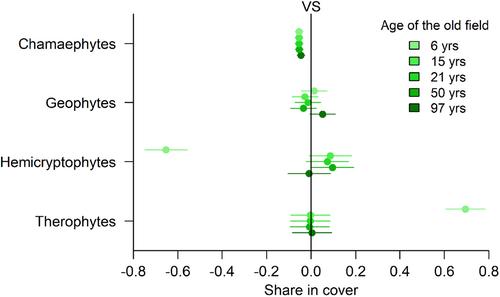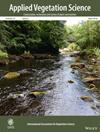Rapid functional but slow species diversity recovery of steppe vegetation on former arable fields in southern Ukraine
Abstract
Questions
European steppes are among the most threatened ecosystems in the Palaearctic region, mainly because of conversion to arable land. Abandonment may allow for the passive recovery of steppes. We made use of an exceptional old-field succession chronosequence of nearly 100 years to answer the following questions: (a) Are the plant species composition, species richness and functional characteristics typical of virgin grass steppes able to self-restore during ca. 100 years after abandonment? (b) Do the rates of recovery of the above vegetation characteristics differ over the studied chronosequence? (c) Do topsoil carbon and nitrogen content change over the succession chronosequence, leading to concentrations similar to that of virgin steppes?
Location
Southern Ukraine.
Methods
We sampled vegetation and soil in a virgin grass steppe and in old fields abandoned for 6, 15, 31, 50 and ca. 97 years. We subjected the composition data to multivariate analysis. To test whether species richness, functional and soil characteristics of the old fields diverge from those of the virgin steppe, we used one-way analysis of variance with Tukey's honestly significant difference (HSD) statistic to create 90% confidence intervals.
Results
The vegetation composition of the three most recently abandoned old fields differed significantly from that of the virgin steppe. The species richness of vascular plants was lower in old fields than in the virgin steppe. The share of steppe habitat specialists was similar to the virgin steppe only in the field abandoned for ca. 97 years. Functional characteristics were significantly different from the virgin steppe only in the most recently abandoned old field. Contents of Corg and Ntot in fields abandoned for ≤50 years were lower compared with the virgin steppe.
Conclusions
The functional characteristics of steppe vegetation seem to recover much faster than its biodiversity. However, based on our results, 100 years can be enough time for the spontaneous re-establishment of typical steppe vegetation.


 求助内容:
求助内容: 应助结果提醒方式:
应助结果提醒方式:


